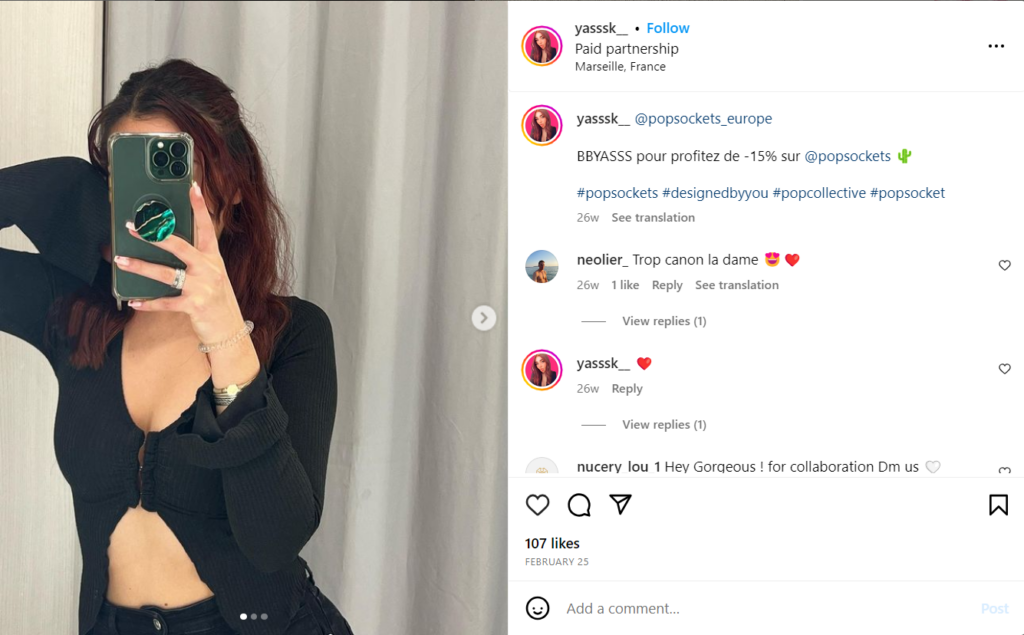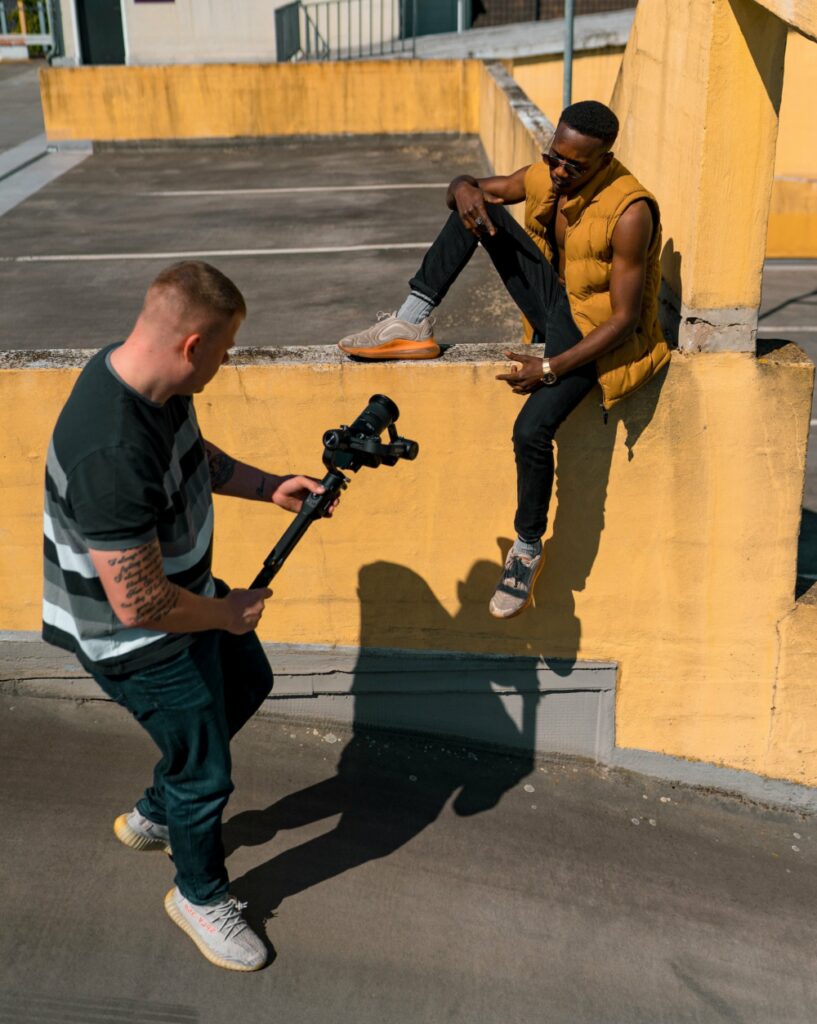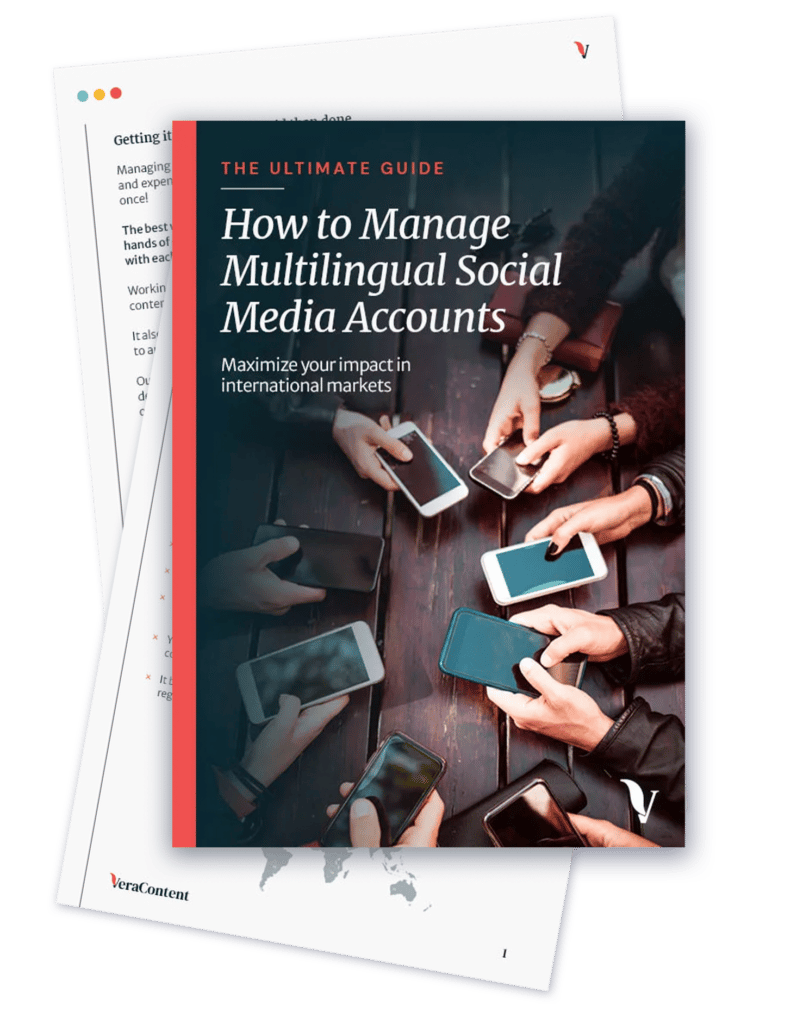The global influencer marketing market size has been rapidly increasing in recent years. And that’s not surprising, as it’s one of the best ways to establish an authentic connection with your audience—particularly for global brands looking to tap into new markets.
Keep reading for a complete guide to getting global influencer marketing right: learn its uniqueness, costs and how to find the right influencers for your brand.
We’ve included several tips from influencer marketing experts we’ve interviewed on our podcast, as well as an example from our work at VeraContent.
Here’s our recap:
What is global influencer marketing?
Global campaigns often struggle to fully connect with a local market’s unique culture, norms and behaviors. But influencers, who can range from internet personalities to remote digital producers, have already built a relationship with the very audience you’re trying to reach.
That’s where global influencer marketing comes in. It’s essentially the process of creating an effective, scalable marketing strategy for collaborating with influencers worldwide.
In our recent interview with Niki Albon, head of creative at Cherry Pick Talent, social media influencers as:
“In its most basic form, an influencer is someone that can influence the opinion or purchasing behavior of an audience. Do you need 400,000 followers to be an influencer? Absolutely not.”
Why are global influencers important?
The global influencer market size has more than tripled since 2019, estimated to be worth a record $24 billion in 2024.
The reason for its growth is simple: it works.
While it’s easy to view influencer marketing as a trend for younger audiences, its effect is cross-generational.
Consumer trends show that 31% of Gen Z, Millennial and Gen X social media users prefer to discover new products from influencers on social media over any other social format or channel.
In fact, about 21% of social media users aged 18 to 54 made a purchase based on an influencer’s recommendation within the last three months of 2022. Among Gen Z users, that number jumps even higher to a solid 32%.
See also: How local influencers can help you grow your brand globally
What makes global influencer marketing unique?

International influencer marketing relies on being flexible. With this flexibility, brands can apply a similar strategy to multiple influencers in different markets—without having to create an entirely new concept each time.
PopSockets is a great example of an international brand successfully implementing global influencer marketing. The mobile phone accessory brand has achieved viral success, with social shares from American celebrities like Kendall Jenner, Ryan Seacrest and Serena Williams.
But the brand has also succeeded with influencer marketing in Europe and the Middle East (EMEA). After a year of working with VeraContent, influencers requested to partner with PopSockets EMEA in record numbers.
One of them was Barbara Sofie, a Germany-based YouTuber with 1.2 million subscribers, who designed her own phone accessory and featured it on her channel.
“Today we receive around four times more partner requests a week than we did in January a year ago. This allows us to carefully choose which influencers we collaborate with.”
– Pierre-Antoine Colonna, EMEA social media marketing manager at PopSockets
Global influencer marketing vs. local influencer marketing

Before exploring the differences between global and local influencer marketing, it’s essential to understand that influencers are categorized by follower count, highlighting their distinct benefits and capabilities.
There are four categories:
- Nano-influencers have less than 1,000 followers
- Micro-influencers have 1,000 to 100,000 followers
- Macro-influencers have 100,000 to 1 million followers
- Mega-influencers have over a million followers
Global influencer marketing is about creating a strategy that can be scaled and replicated in multiple markets. Meanwhile, local influencer marketing focuses on crafting targeted, specialized strategies for a specific region. It’s more granular than global influencer marketing.
Local influencer marketing also has a lot of overlap with localization, which is the process of ensuring your content resonates with an audience both linguistically and culturally.
See also: Promoting your global brand with TikTok influencer marketing
To sum up the differences:
- Global influencer marketing is about applying a global strategy during your partnership with influencers. You’re more likely to be working with macro-influencers, but not necessarily exclusively.
- Local influencer marketing means applying a localized marketing strategy when working with influencers from that region. Your approach is tailor-made for that market. You’re more likely to work with nano or micro-level influencers.
“Macro-influencers are used to drive brand or product awareness, so you can look at the number of views. Micro-influencers have a stronger connection to their audience, so KPIs might include clicks or sales conversions.”
– David Robson, global community and influencer manager at Deep Silver
See also: Why brands invest in hyperlocal social media strategies
An important thing to keep in mind is that the two strategies are not mutually exclusive.
Influencer marketing experts support the phrase: “Think globally, act locally.”
If you develop a great global influencer marketing strategy, it will save resources by applying pre-established approaches to multiple partnerships in different regions.
In turn, you can still leave much of the creative control to local creators, who have the freedom to change things as needed and advocate for your brand in their own voice.
“It’s vital to give influencers as much creative control as possible because they know their audience better than anyone else. Give them a broad framework to work within and let them create content that they know will resonate with their viewers.”
– David Robson, global community and influencer manager at Deep Silver
However, the scale of your global or local influencer marketing strategies will depend on your budget. Let’s discuss how much influencer marketing costs.
Also see our interview with expert influencer marketer Jo Burford
Freebie: Download our complete guide on how to manage multilingual social media accounts:

How much does global influencer marketing cost?
As with anything, influencer marketing is an investment.
Many global brands looking to reach local markets more effectively say it’s worth it: 89% of marketers say ROI from influencer marketing is comparable to or better than other marketing channels. For every $1 spent on influencer marketing, brands earn around $5.20.
So, how much are marketers spending on influencer marketing?
During a global 2023 survey among marketing agencies and brands, 25% of respondents stated they invested 10% to 20% of their marketing budget into influencer marketing spend.
Costs also vary greatly depending on the influencer. Most creators will have a rate sheet with information itemized by content type. The industry standard in the US is around $100 per 10,000 followers for an Instagram post, plus any additional fees (such as overhead costs, exclusivity, etc.).
2023 research from impact.com found that nano Instagram influencers charge between $500 – $2,000 per post, and mega/celebrity influencers can charge over $45,000 per post.
The costs are similar for TikTok influencers, while YouTube influencers charge higher rates. For example, a nano YouTube influencer could charge between $1,000 – $2,500 per video, while a mega/celebrity YouTube influencer can charge over $49,000 per video. YouTube’s pricing is higher and more diverse than other platforms, reflecting the greater costs and effort needed for video production compared to simpler image or text content.
If that sounds beyond your company’s means, don’t worry.
Here are some solutions to tap into global influencer marketing without a big budget:
- Look towards smaller creators. Local micro-influencers can be a “Goldilocks” solution for marketers. Their audiences are typically more engaged than macro-influencers while still being sizable enough for the cost.
“Micro-influencers are great for brands without a large budget. While you won’t get the reach you’ll get with a macro-influencer, micro-influencers get higher engagement rates. So it’s really a strategic decision for your brand and depends on your goals and budget for the campaign.”
– Rudy Dupuis, global social media strategist at Clarins
- User-generated content. Are people already creating content around your brand? Encourage your followers to create more content by sharing their posts. You can also create influencer marketing campaigns that encourage user-generated content through giveaways.
- Consider a contest. Influencer-collaborated contests are a great way to grow your follower account by requiring a follow, comment or share to enter.
- Are you an ethical or sustainable brand? If your brand has an ethical identity, many creators might be willing to work with you and cut costs.
The scale of your business investment into influencer marketing spending depends on your budget and global marketing strategy, but it’s possible to do without a big budget. Ultimately, the cost of working with a creator will depend on who they are and the type of content your campaign requires.
See also: Global influencer marketing strategy: 3 key things to know
How do you find global influencer marketers?
The most important step to international influencer marketing is finding the right talent to work with. You want to look for creators with the same values, target audience and “feel” as your brand.
Top brands now use AI-based discovery tools like Modash to sort potential influencer candidates based on target characteristics, like engagement rate.
“The first thing you need to do as a brand is to identify profiles that go well with your brand but also to collaborate together. Give them the liberty to create for you, as a brand.”
– Laura Uslar, Global Brand and 360 Communications Manager for LVMH Group
However, experts emphasize that even with the best tools, finding global influencer marketers involves a lot of watching and social listening. Social listening tools, like Hootsuite or BuzzSumo, can help find creators already talking about your product.
“Make sure you’re looking at the stats that make sense. Drill down your KPIs and go in with a clear vision of what you want to obtain from the partnership.”
– Niki Albon, head of creative at Cherry Pick Talent
Sometimes, influencers will reach out to you, so keep your DMs open.
If someone with a certain follower count tags your brand, respond and continue the conversation. It could lead to sending freebies and maybe a potential partnership—depending on whether the creator is a good match for your brand. These organic connections are often the best matches.
“People tend to follow influencers that speak to their values and have the same taste. So, there’s a high likelihood that if a creator loves your brand, their audience will too.”
– Niki Albon, head of creative at Cherry Pick Talent
Get started with international influencer marketing
Influencer marketing can have a huge impact on brands looking to find authentic ways to connect with new audiences. While it might seem daunting, an experienced global social media agency that specializes in global social media services will know the next steps forward, from assessing your goals to finding the right influencers to work with.
At VeraContent, we help global brands create amazing content that stands out from the rest. If you’re interested in learning more, get in touch and see if you qualify for a Free Content Consultation!

